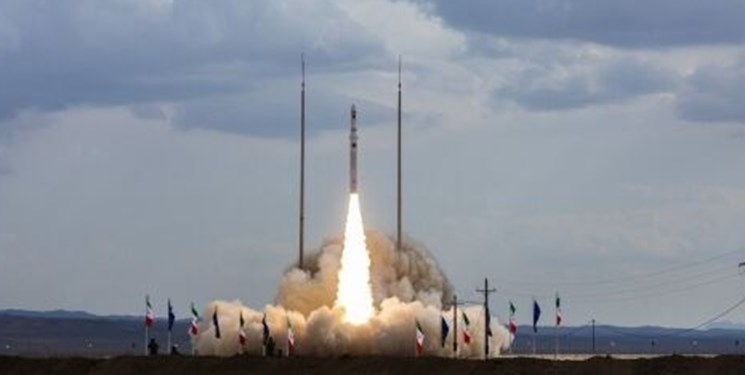Alwaght- Iran has successfully launched on Saturday a three-stage solid fuel suborbital carrier.
Qaem 100, the first of its kind manufactured by Iranian scientists, is capable of putting satellites weighing up to 80 kilograms into orbit 500 kilometers from the earth's surface, The Aerospace Force of Iran's Islamic Revolution Guards Corps (IRGC) announced.
The launch vehicle’s solid-fueled first-stage engine, which had been subjected to ground tests early this year, successfully completed its first suborbital spaceflight.
That means, according to IRGC officials, that Qaem 100 is now ready to launch Nahid, a satellite manufactured by Iran's Ministry of Information and Communications Technology, into orbit in the near future.
Brigadier General Amir-Ali Hajizadeh, the commander of the IRGC's Aerospace Division, and other senior military officials, supervised the flight test of the satellite carrier.
Speaking on the sidelines of the ceremony, Hajizadeh said arrogant countries, led by the United States, are doing all they can to hinder Iran's progress, adding, "They cannot stand the impressive achievements of the Islamic Republic of Iran."
Previous launches have drawn criticism from the United States and its allies, which have long been wary of Iran’s satellite program as the same technology can be used to develop long-range missiles. Iran says its satellite program is aimed at scientific research and other civilian applications.
Hajizadeh emphasized that the Iranian youths are overcoming the "heaviest" sanctions in history to make such great achievements.
Iran will continue down the path of progress and modern technologies, the IRGC commander insisted.
Iran has over the past years succeeded in manufacturing and putting into space different satellites as well as launching various carriers.
Late in June, Iran tested its domestically-developed hybrid-propellant satellite carrier rocket called Zuljanah for “predetermined research purposes” for the second time.



























